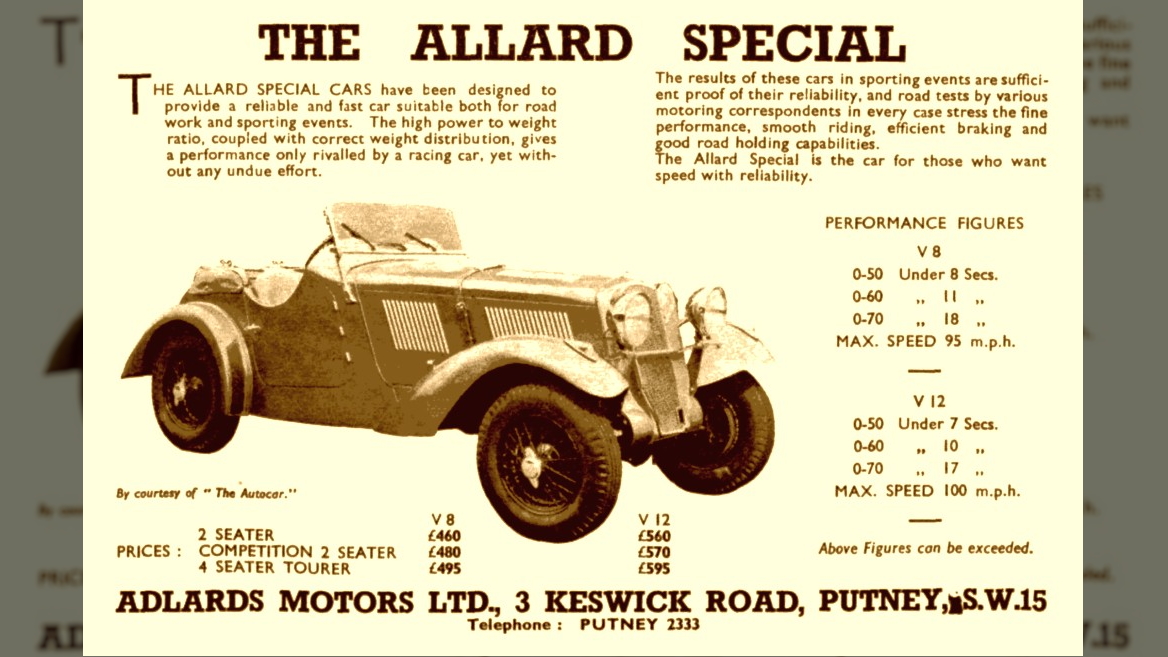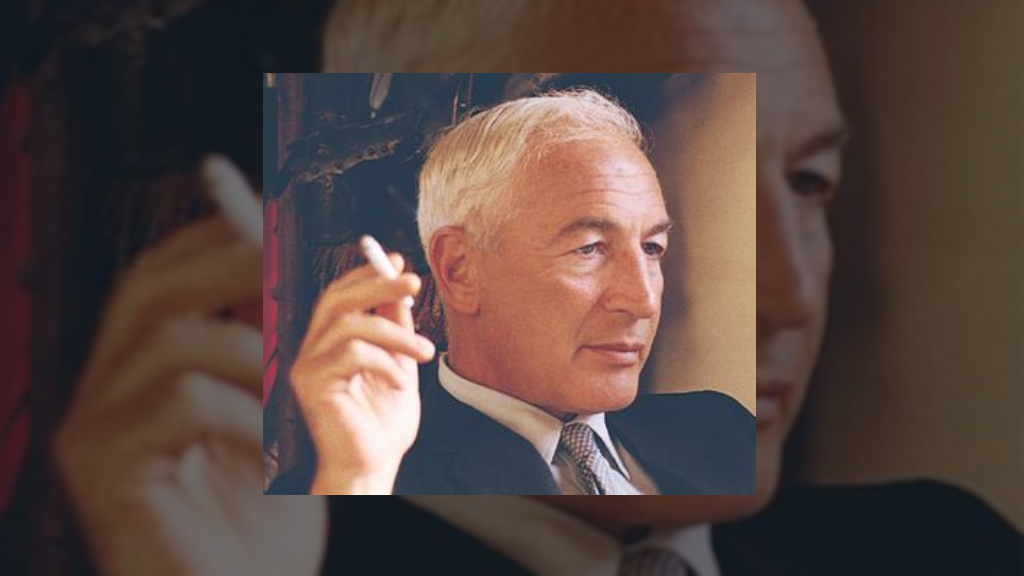To start, let’s talk a little bit about what Allard was. A small car company focused on motorsports, Allard was always about little cars with big engines. We’re not talking about Jaguar straight-sixes, we’re talking about burly American engines with eight or more cylinders. I’ll go into more detail on Allard later on, but all you need to know for now is that Allards were fast cars, capable of embarrassing more expensive machinery. Let’s start with the quick and easy question to answer (again, we’ll get into what an Allard is at all in just a bit, relax) – who’s making new NHTSA-approved Allards? A small company called Allard Motor Works founded by Montrealer Roger Allard (no relation to the original company’s founder). Its mission? To bring back Allard using modern materials and powertrains. Of course, they still feature big American V8s, but carbon fiber takes the place of certain metal body panels, the big V8s are GM LS engines or Mopar Hemis, and adjustable QA1 shocks, four-wheel independent suspension, and disc brakes help these new Allards handle and stop properly. Think of them almost as Singer Porsches. The icy cool looks of yesteryear with properly modern mechanicals. Of course, a lovely modern interpretation of a classic sports car doesn’t come cheap. Allard doesn’t divulge pricing, but an Autocar test of a 2011 model quoted a price tag of £125,000. That’s around £150,000 in today’s money, or around $189,000. That’s a lot of money, but is Audi R8 money really that bad for something like this? For starters, the Allard J2X MkIII definitely don’t give off the gym bro attitude of an R8, nor are you likely to see another one. More importantly, this isn’t just some replica, it’s a continuation. These new cars are recognized by the Allard Register, an important distinction from something like a Factory Five Roadster. Perhaps best of all, the NHTSA’s low volume manufacturer exemption means Allard can finally deliver turn-key cars with pre-installed engines. Imagine going out on the town in a brand new 50-state-legal Allard, how fabulous that must be. The new Allards sound wonderful, but if you don’t know what an Allard even is, then what’s the point? So, with that in mind, let’s answer some questions: what sort of pedigree comes with the Allard name? How did Allard influence the Chevrolet Corvette, the Shelby Cobra, and numerous other sports cars? The story begins before Allard was even a company, with a man by the name of Sydney Allard. Born in south London in 1910, Allard was fairly fortunate. His father was in the lucrative building trade and wanted Sydney to go into the building trade. As luck would have it, Allard developed a fascination with all things fast and four-wheeled. The first car Allard built was a Morgan three-wheeler converted to a four-wheeled car for the sole purpose of racing. Guess what? It won at Brooklands, posting a blistering for 1929 73.37 mph according to the August 1965 issue of Motorsport Magazine. The seeds were sown and after attending boarding school, Allard’s father set him up with a mentor and garage space at the tender age of just 20. The building where the garage was located was owned by one Robert Adlard, and Allard retained the Adlard name for the garage. Now, what would you do if you were managing a garage in your early 20s sometime before World War II? Why, you’d assess suitable resources and figure out how to build an even faster race car. Say hello to CLK5, the first Allard Special. It got its name from its number plate and was a bit of a high-class mongrel. The chassis and powertrain came from a Ford Model 48 V8, while the body, steering, and fuel tank came from a Bugatti. While 30 horsepower doesn’t sound like much today, CLK5 proved fearsome in trials events. In fact it was so successful, that Allard built two more cars, both of which received some upgrades. They both had replica bodies, they both had steel disc wheels, they both had divided-axle independent front suspension, but only one had a drilled chassis for lightness. That car was FGP 750, and it still exists today. The next three cars were mechanically-similar to CLK5, but featured coachwork with mud guards and room for up to four, and flat radiator grilles. A bit sensible. Maybe a bit too sensible, for Allard was ready for something silly. If eight cylinders are good, more is more better, right? Forget the Ford V8, Allard chucked in a Lincoln V12 to make something truly special out of FXP 470. According to Motor Sport Magazine, it featured 4.11:1 gearing, would do 60 mph in second, and 90 mph in top gear. For 1938, that was absolutely ballistic. After FXP 470, Allard built three more cars before war broke out in Europe. Another V12, a V8, and an experimental V12 that was unfinished when conflict broke out. However, Allard wasn’t about to go out without a bang. Not only did he win the last British speed event before World War II, he crashed after the finish line in a collision that threw both him and his co-driver clear of the vehicle. Miraculously, both were uninjured, at least according to the November 1946 issue of Motor Sport. They say it’s better to be lucky than good, but Allard had both of those attributes in the bag. After the war, Allard decided to take building cars really seriously, and founded Allard Motor Company. Sometimes it’s best to stick with what you know, so big V8 engines in tiny sports car chassis were the name of the game. Honestly, American V8s and European sports cars usually go together like Red Bull and Jägermeister, so it’s no wonder than Allard attracted two very important names in sports car history – Zora Arkus-Duntov and Carroll Shelby. After coming to America in 1941, Arkus-Duntov’s first venture was making dies and punches for ammunition and airplanes. Hey, there was a war going on, the fuel and spare manufacturing capacity wasn’t there for such luxury pursuits as racing. However, Arkus-Duntov always had racing on the brain and in 1947, conceived a novel set of cylinder heads for flathead Ford V8s. Not only were they cast from aluminum, these Ardun cylinder heads featured hemispherical combustion chambers and an overhead valve design. They were pretty nifty, but after some questionable financial decisions, Ardun went bust. Then, Sydney Allard came calling. Allard needed someone to prep his cars for the 24 Hours of LeMans, and Arkus-Duntov seemed like just the man for the job. The future father of the Corvette signed on with Allard in 1950 and, rather remarkably, kept racing Allards after he’d switched employers to GM. While the original Corvette’s Blue Flame inline-six could barely pull the skin off a rice pudding, it wasn’t long before Arkus-Duntov suggested shoving a V8 in America’s sports car. In 1953, Arkus-Duntov wrote a memo that would become the stuff of GM legend, titled Thoughts Pertaining to Youth, Hot Rodders and Chevrolet. The summary? Hey, we make this sports car, let’s drop a V8 in it and make a whole bunch of go-fast parts. Take a guess what happened. Yes, Arkus-Duntov convinced GM to drop a small-block in the Corvette, and GM benchmarked Allard for this task. Not only was a Cadillac-Allard used for internal testing, GM picked up Allard K3 chassis number 3171 for testing purposes. So what about Mr. Shelby? While Carroll Shelby’s first competition drive was in an MG TC, he quickly graduated to a series of Cadillac-powered Allards. Who could blame him? They were fast, reasonably plentiful and packed Cadillac reliability. The reliability and pace of Cadillac-powered Allards coupled with Shelby’s driving talent helped the Texan win races in 1952 and 1953, gaining Shelby a strong reputation and opening doors to drives in Europe. While Shelby went on to drive Aston-Martins, Austin-Healeys, and Ferraris, it seems he never forgot where he came from – V8 engines in European sports cars. While the Shelby Cobra may be Shelby’s most famous instance of putting a chest-beating V8 in a lithe European chassis, it was far from the only instance. Shelby’s first take on this concept was throwing a small-black Chevrolet V8 in a featherweight Lister sports car. A fast and fearsome racer, these Chevrolet-powered Listers weren’t exactly the most streetable things on the planet. Don’t worry, Shelby would soon have a solution for that. Take one Sunbeam Alpine sports car, chuck in a Ford small-block V8, call it the Sunbeam Tiger, and unleash it on the public. Not only was the Tiger pretty, it was reasonably quick. Job well done there. So, the V8-powered Chevrolet Corvette, the Shelby Cobra, and the Sunbeam Tiger all owe their existence, arguably, to Sydney Allard’s sports cars. Peddlers of fast, fearsome, and incredibly stylish, Allard was the Velvet Underground of sports car marques. Far from a household name, but so incredibly influential. Without Allard, there might never have been the Mustang GT350, the Dodge Viper, and the Ford GT. Rock star cars as far as I’m concerned. Isn’t it grand that any Allard fan with the cash can now buy a turn-key new one? Lead photo credit: Allard Motor Works









